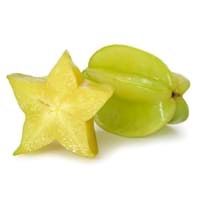Health Benefits
Cancer prevention, Diarrhea treatment, Prevents constipation, Scurvy treatment, Treatment of dysentary
Cancer prevention, Heat stroke treatment
General Benefits
Controls blood pressure, Cures cough, Improves eye vision, Maintains healthy cholesterol level, Treatment of common cold
Anti oxidant properties, Anti-inflammatory properties, Digestive aid, Maintains healthy cholesterol level, Treatment of sore eyes
Skin Benefits
Anti-aging benefits, Brightens and lightens complexion, Hydrates skin, Treatment of skin diseases
Anti-aging benefits, Heals sunburn, Skin rejuvenation
Hair Benefits
Prevents hair loss
Promotes longer and healthier hair, Protects hair
Allergy Symptoms
Breathing difficulty, Coughing, Runny nose, Sneezing, Swelling of mouth, tongue or lips, Wheezing
NA
Side Effects
Hair thinning, Nail thinning, Skin problems, Tooth decay, Weakness, Possibly unsafe during pregnancy
Nausea, Vomiting
Best Time to Eat
As a snack in the late afternoon, Don't consume at night and before bed, Eat the fresh ones, avoid mixing with any other foods, don't eat after meal., Morning time (before lunch)
As a snack in the late afternoon, Eat the fresh ones, avoid mixing with any other foods, don't eat after meal., Strictly avoid empty stomach
Vitamin B5 (Pantothenic Acid)
Vitamin C (Ascorbic Acid)
Vitamin K (Phyllochinone)
Calories in Fresh Fruit with Peel
Calories in Fresh Fruit without Peel
Not Available
Not Available
Calories in Frozen Form
Not Available
Not Available
Calories in Canned Form
Not Available
Calories in Jam
Not Available
Calories in Pie
Not Available
Type
Tree fruit, Tropical
Tree fruit
Season
All seasons
Autumn, Spring, Summer
Varieties
Lucknow 49, Allahabad Safeda, Chittidar, Harijha, Apple guava, Hafshi, Arka Mridula and Allahabad Surkha
King, Bell, Sri Kembangan, Arkin and Fwang Tung
Color
Green, Pink, Yellow
Golden yellow, Green
Inside Color
White
Yellowish Green
Shape
Round
Oval and Star(Cross section)
Taste
Sweet-Sour
Crisp, Juicy, Sweet
Origin
Central America, Mexico, South America
Sri Lanka
Grows on
Trees
Not Available
Soil Type
Loam, Rocky, Sandy
Loam, Well-drained
Climatic Conditions
Sunny
Moist, Warm to hot climate
Facts about
- The black pigment in Guava leaves is used for textile applications.
- Guava leaves are used to make tea.
- Oils extracted from guava seeds are used in various cosmetics.
- Guava wood is used for decorative purposes.
- When carambola is cut horizontally, it forms a star.
- It is believed that carambola helps to cure hangover.
- Entire carambola is edible, including its skin.
- 2 varieties of carambola are cultivated: tart & sweet.
Top Producer
India
Taiwan
Other Countries
China, Indonesia, Mexico, Nigeria, Pakistan, Philippines, Thailand
Australia, Guyana, India, Israel, Malaysia, Philippines, United States of America
Top Importer
Canada
Europe
Top Exporter
India
Malaysia
Botanical Name
Psidium guajava
Averrhoa carambola
Synonym
Not Available
Not Available
Subkingdom
Tracheobionta
Tracheobionta
Division
Magnoliophyta
Magnoliophyta
Class
Magnoliopsida
Magnoliopsida
Order
Myrtales
Oxalidales
Family
Myrtaceae
Oxalidaceae
Species
Psidium guajava
A. carambola
Generic Group
Myrtle
Not Available
Difference Between Guava and Carambola
We might think that Guava and Carambola are similar with respect to nutritional value and health benefits. But the nutrient content of both fruits is different. Guava and Carambola Facts such as their taste, shape, color, and size are also distinct. The difference between Guava and Carambola is explained here.
The amount of calories in 100 gm of fresh Guava and Carambola with peel is 68.00 kcal and 31.00 kcal and the amount of calories without peel is Not Available and Not Available respectively. Thus, Guava and Carambola belong to Low Calorie Fruits and Low Calorie Fruits category.These fruits might or might not differ with respect to their scientific classification. The order of Guava and Carambola is Myrtales and Oxalidales respectively. Guava belongs to Myrtaceae family and Carambola belongs to Oxalidaceae family. Guava belongs to Psidium genus of Psidium guajava species and Carambola belongs to Averrhoa genus of A. carambola species. Beings plants, both fruits belong to Plantae Kingdom.









